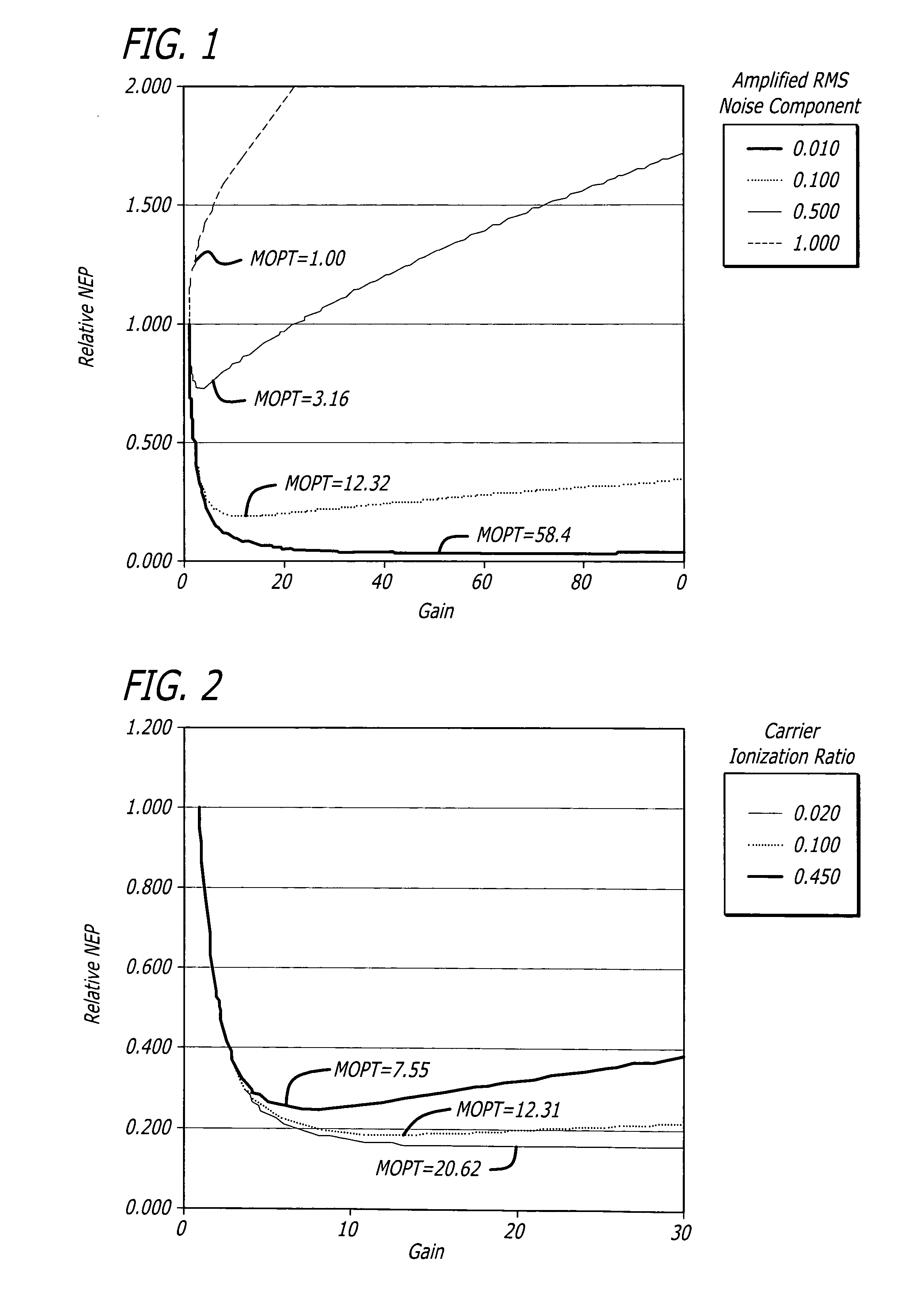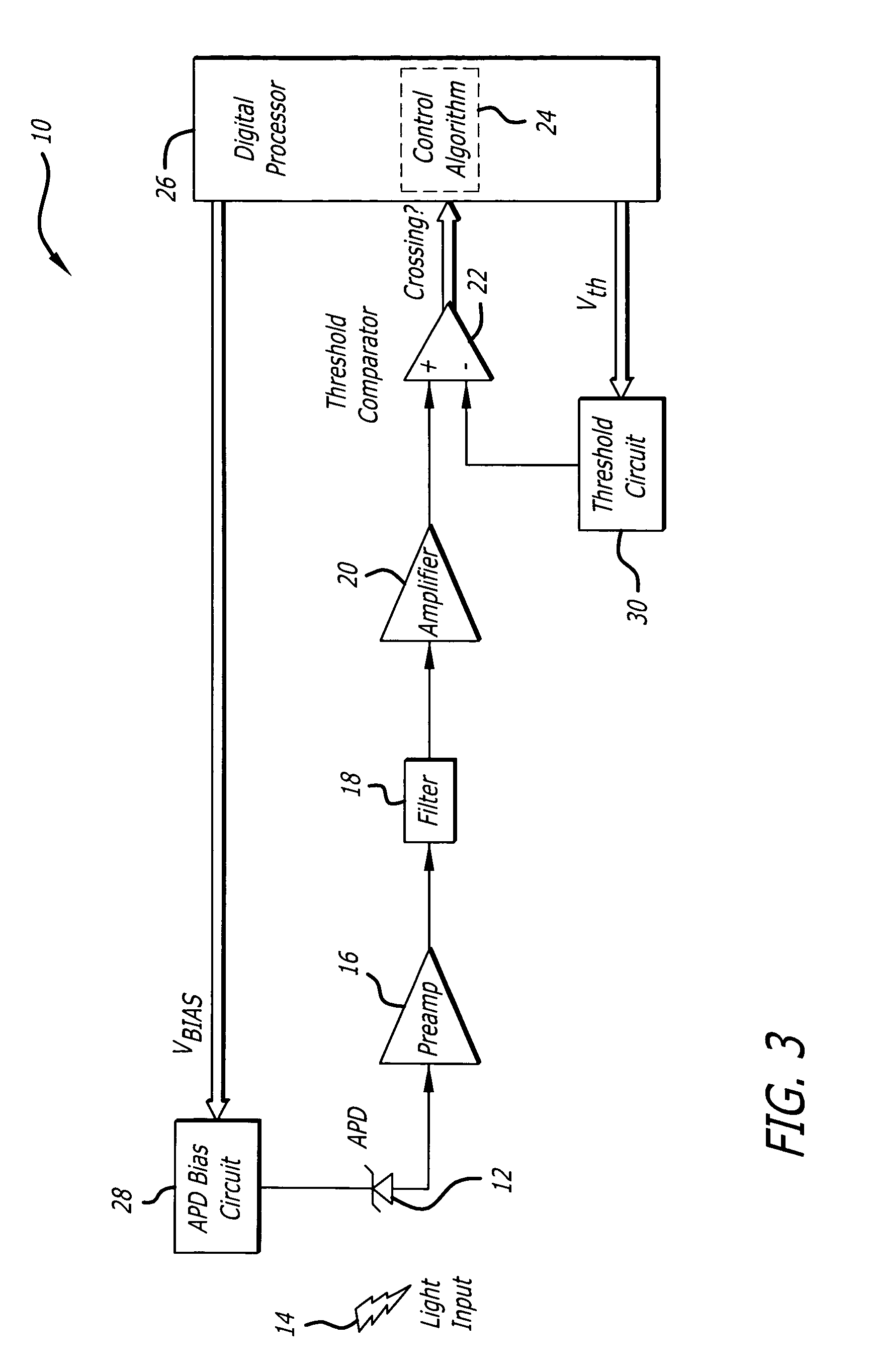Automatic avalanche photodiode bias setting system based on unity-gain noise measurement
a technology of avalanche photodiodes and bias setting, applied in the field of electromechanical systems, can solve the problems of inherently noisy avalanche multiplication, varying optimum gain value, and not optimizing gain based on ambient noise conditions
- Summary
- Abstract
- Description
- Claims
- Application Information
AI Technical Summary
Benefits of technology
Problems solved by technology
Method used
Image
Examples
Embodiment Construction
[0016]Illustrative embodiments and exemplary applications will now be described with reference to the accompanying drawings to disclose the advantageous teachings of the present invention.
[0017]While the present invention is described herein with reference to illustrative embodiments for particular applications, it should be understood that the invention is not limited thereto. Those having ordinary skill in the art and access to the teachings provided herein will recognize additional modifications, applications, and embodiments within the scope thereof and additional fields in which the present invention would be of significant utility.
[0018]The gain of an avalanche photodiode (APD) is the net increase in the number of signal carriers generated through this avalanche multiplication process. Avalanche multiplication is inherently noisy, as both minority and majority carriers contribute to the noise current, while only minority carriers contribute to the signal current. This excess n...
PUM
 Login to View More
Login to View More Abstract
Description
Claims
Application Information
 Login to View More
Login to View More - R&D
- Intellectual Property
- Life Sciences
- Materials
- Tech Scout
- Unparalleled Data Quality
- Higher Quality Content
- 60% Fewer Hallucinations
Browse by: Latest US Patents, China's latest patents, Technical Efficacy Thesaurus, Application Domain, Technology Topic, Popular Technical Reports.
© 2025 PatSnap. All rights reserved.Legal|Privacy policy|Modern Slavery Act Transparency Statement|Sitemap|About US| Contact US: help@patsnap.com



